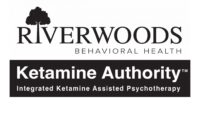
Kicking off our conversation, we've keenly kept an eye on the compelling connection between ketamine and its capacity to catalyze post-traumatic growth. As professionals in the field, we're intrigued by how this substance, traditionally used for anesthesia, is now playing a pivotal role in therapeutic settings for individuals grappling with the aftermath of trauma.
We're particularly interested in exploring how ketamine-assisted therapy facilitates a transformative process, fostering resilience and renewal in ways previously unimagined. Join us as we unpack the intricacies of this treatment, its mechanisms of action, and the profound potential it holds for healing and growth.
Why does ketamine's impact on the mind offer a unique pathway to recovery? Let's explore together.
Understanding Post-Traumatic Growth
Many people emerge from traumatic experiences not just surviving, but surprisingly, thriving, a phenomenon known as post-traumatic growth. It's an area we've delved deep into, seeking to understand how adversity can lead to significant personal development. The concept goes beyond mere resilience; it's about experiencing profound change, often manifesting in newfound strengths, deeper relationships, and a richer appreciation for life.
We've discovered that this growth isn't random, nor does it happen overnight. It involves a complex process of reevaluating one's beliefs, values, and assumptions about the world. Individuals often report a shift towards more meaningful spiritual beliefs, greater empathy and connectivity with others, and an enhanced sense of personal strength. They aren't just bouncing back; they're bouncing forward, reshaping their lives in ways they hadn't imagined before their ordeal.
As we explore this fascinating transformation, we're reminded that the path to post-traumatic growth is deeply personal and varies widely. Some find their stride quickly, while others take a longer journey. What's clear, though, is the incredible capacity for humans to adapt, evolve, and find meaning in the face of adversity. It's a testament to the resilience and growth potential inherent in all of us.
Basics of Ketamine-Assisted Therapy
Delving into the realm of therapeutic interventions, we find that ketamine-assisted therapy offers a novel approach for those grappling with the aftermath of trauma. This method integrates the use of low doses of ketamine, a medication initially renowned for its anesthetic properties, with psychotherapy sessions to enhance therapeutic outcomes. It's a cutting-edge treatment that's gained traction over the past few years, particularly for individuals who haven't found relief through traditional therapy methods or medications.
At its core, ketamine-assisted therapy is administered under the guidance of trained professionals in a controlled setting. Patients typically undergo several sessions, during which they receive ketamine in a safe, supportive environment. The process is meticulously planned, starting with a preparatory session that outlines what to expect, followed by the actual ketamine sessions, and concluding with integration sessions. These final sessions are crucial as they help patients process their experiences, facilitating a deeper understanding and assimilation of the insights gained during the therapy.
We've observed that this approach can significantly reduce symptoms of PTSD and depression, offering hope to many who've struggled to find effective treatments. It's a testament to the evolving landscape of mental health interventions, showcasing the potential of combining pharmacological advances with psychotherapeutic support.
Ketamine's Impact on the Mind
Ketamine's transformative potential on the mind opens new avenues for understanding and treating psychological trauma. We've observed its unique ability to facilitate a detachment from current thought patterns, which can be immensely beneficial for individuals stuck in the grip of traumatic memories. This detachment doesn't just offer temporary relief; it enables a profound reevaluation of past experiences, often leading to significant shifts in perception and emotional response.
What's truly fascinating is how ketamine seems to stimulate the brain's plasticity. This means that during the window of heightened neuroplasticity following ketamine administration, there's an opportunity for the brain to form new, healthier neural pathways. We're seeing that this isn't just about numbing the pain or offering a brief respite. It's about laying down the groundwork for long-term healing and growth.
Moreover, ketamine's impact isn't limited to the conscious mind. It also affects deeper, subconscious processes that govern our emotional and psychological well-being. Through its action, we witness a decrease in the overactivity of the brain areas responsible for stress and fear responses, promoting a sense of calm and making it easier for individuals to process and move beyond their trauma.
Therapeutic Process and Integration
Understanding the therapeutic process and integration of ketamine treatment is crucial for harnessing its full potential in fostering post-traumatic growth. We must appreciate how ketamine's unique effects on the brain can serve as a catalyst for profound personal transformation when carefully combined with therapeutic support.
During treatment, we guide individuals through their experiences, helping them to interpret and integrate these insights into their daily lives. This process isn't just about the moments during the ketamine sessions but equally about the work done afterward. We emphasize creating a safe space where individuals can explore the meanings and insights gained during their experiences. It's here, in the integration phase, where the seeds of post-traumatic growth are nurtured.
We've found that the integration process often involves techniques from various therapeutic modalities, such as cognitive-behavioral therapy and mindfulness, tailored to each individual's needs. This bespoke approach ensures that the insights gained from ketamine therapy aren't just fleeting moments of revelation but are woven into the fabric of the individual's psyche, promoting lasting change and growth.
In essence, it's this careful balance of pharmacological intervention and psychotherapeutic support that empowers individuals to turn their trauma into a platform for profound personal development.
Measuring Post-Traumatic Growth
Assessing post-traumatic growth involves quantifying the ways individuals transform adversity into personal development milestones. We use specific tools and scales designed to capture the complexity of this psychological phenomenon. These instruments measure various dimensions of growth, including personal strength, appreciation of life, relationships with others, new possibilities, and spiritual change.
To accurately gauge the impact of interventions like ketamine therapy, we rely on these measures before and after treatment. It's crucial for us to understand not just if, but how individuals are evolving through their traumatic experiences. The Post-Traumatic Growth Inventory (PTGI) is a commonly used tool in our assessments. It's a self-report questionnaire that participants complete, reflecting on their growth since their traumatic event.
Frequently Asked Questions
How Does the Cost of Ketamine-Assisted Therapy Compare to Traditional Mental Health Treatments?
We've been wondering how the cost of ketamine-assisted therapy stacks up against traditional mental health treatments.
It turns out, ketamine therapy can be more expensive upfront, mainly due to the specialized care and monitoring required during sessions.
However, if we consider the potential for faster, more effective results in some cases, the higher initial investment might actually offer a cost-effective alternative in the long run, especially for those struggling with traditional treatments.
Can Ketamine Therapy Facilitate Post-Traumatic Growth in Individuals Without a Formal PTSD Diagnosis?
We're exploring whether ketamine therapy can help individuals grow after experiencing trauma, even if they haven't been formally diagnosed with PTSD.
This inquiry delves into the potential of ketamine to unlock new pathways for healing, offering hope for those who mightn't fit the traditional criteria for trauma-related therapies.
We're intrigued by the possibility that this treatment could broaden the scope of support available, making healing more accessible to a wider range of people.
Are There Any Long-Term Side Effects of Ketamine Therapy That Could Potentially Hinder Post-Traumatic Growth?
We're curious about the long-term side effects of ketamine therapy and how they might impact growth after trauma.
It's important for us to understand if these potential drawbacks could set back someone's progress.
We've seen promising results in the short term, but we're eager to ensure these benefits last without causing additional challenges.
Our goal is to find a balance that promotes healing without unintended consequences.
How Do Personal Beliefs and Cultural Backgrounds Influence the Effectiveness of Ketamine in Fostering Post-Traumatic Growth?
We're exploring how our personal beliefs and cultural backgrounds shape our experiences with treatments like ketamine.
It's fascinating to consider that what we bring to the table, in terms of our perspectives and upbringing, might significantly alter how effective these treatments are for us.
This realization pushes us to think beyond the drug itself and delve into the broader, more complex interplay of psychology, culture, and medicine in healing and growth.
What Role Do Support Networks Play in Enhancing the Post-Traumatic Growth Experienced Through Ketamine Therapy?
We've been exploring how support networks boost the growth one experiences after trauma, especially when therapy is involved. It's fascinating to see that having a strong circle of support can significantly enhance the healing process. Support networks offer emotional safety, encourage openness, and provide a sense of belonging.
They're crucial in helping individuals navigate their recovery journey, making the therapeutic effects more profound and lasting. It's a key aspect of healing we're keen to understand better.
Conclusion
In conclusion, we've seen how ketamine-assisted therapy offers a promising avenue for fostering post-traumatic growth. By altering our mind's perceptions and facilitating deeper introspection, it opens us up to therapeutic insights.
Through careful integration of these experiences, we're able to measure significant strides in overcoming past traumas. Ultimately, it's the combination of ketamine's unique effects and guided therapy that empowers us to transform our struggles into steps toward personal growth and resilience.

